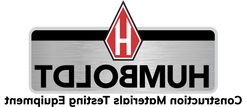界限含水量
Atterberg limits is a basic measure of the critical water content of fine-grained soils. These tests include shrinkage limit, plastic limit, and liquid limit, which are outlined in ASTM D4318. Depending on the water content of a soil, it may appear in four states: solid, 半固态, 塑料和液体. The consistency and behavior of a soil is different as are the engineering properties at varying degrees of moisture content. Thus, the boundary between each state can be defined based on a change in the soil's behavior. The Atterberg limits can be used to distinguish between silt and clay, and to distinguish between different types of silts and clays. These limits and tests were developed by Albert Atterberg, a Swedish agriculturist and later, were refined by Arthur Casagrande.
These tests can be used in evaluating various soils, which will ultimately have structures built upon them. Soils when wet retain water, and some expand in volume. The amount of expansion of a soil is related to the ability of it to absorb water and its structural make-up. Atterberg tests are mainly used on clayey or silty soils since these are the soils most affected by expansion and shrinkage due to varying moisture contents.
Thus the Atterberg tests are used widely in the preliminary design stages of structures ensuring that the soil will have the correct amount of shear strength and will exhibit minimal volume change as it expands and shrinks with different moisture contents.
界限含水量 实验室 Tests
液限
The liquid limit test, defined in ASTM标准D4318, determines the water content at which the behavior of a clayey soil changes from plastic to liquid. 然而, the transition from plastic to liquid behavior is gradual over a range of water contents, and the shear strength of the soil is not actually zero at the liquid limit. The precise definition of the liquid limit is based on standard test procedures. 液限 can be determined using the Casagrande cup method, which is widely used in the United States or with a cone penetrometer, which is more prevalent in Europe.
塑性极限
塑性极限 is a test that involves rolling out a thread of the fine portion of a soil on a flat, 无孔的表面. 过程定义在 ASTM标准D4318. If the soil is at a moisture content where its behavior is plastic, this thread will retain its shape down to a very narrow diameter. The sample can then be remolded and the test repeated. As the moisture content falls due to evaporation, the thread will begin to break apart at larger diameters. The plastic limit is defined as the moisture content where the thread breaks apart at a diameter of 3.2mm(约1/8英寸). A soil is considered non-plastic if a thread cannot be rolled out down to 3.2 mm at any moisture possible.
收缩极限
收缩极限 is a test that evaluates the water content of a soil where further loss of moisture will not result in an additional volume reduction. The test to determine the shrinkage limit is ASTM D4943. The shrinkage limit is much less commonly used than the liquid and plastic limits.
For more information about 洪堡's 界限含水量 products, or to learn more about liquid limit and plastic limit of soils, 下载 界限含水量 Testing datasheet1点给我们打电话.800.544.7220或使用我们的 问洪堡 form.
![]() 或使用
问洪堡
或使用
问洪堡
![]()




